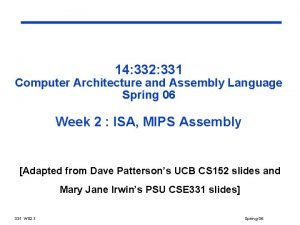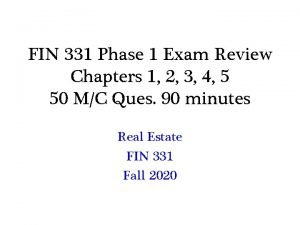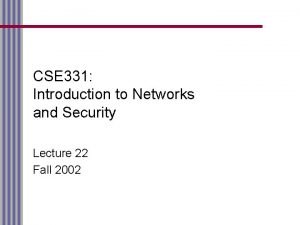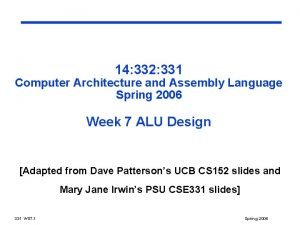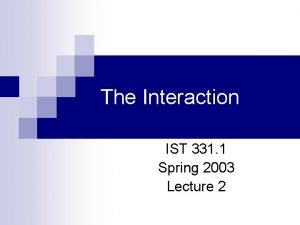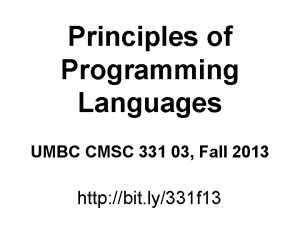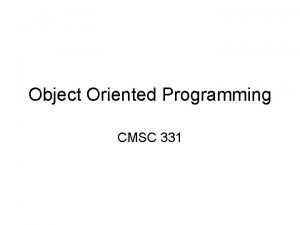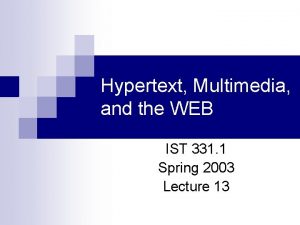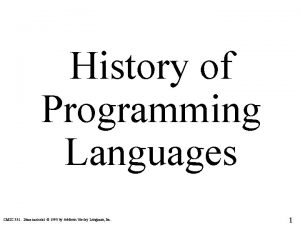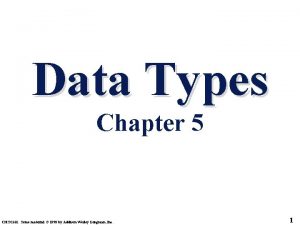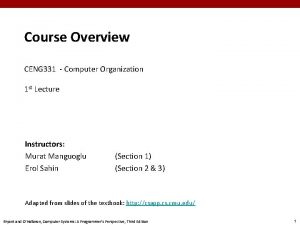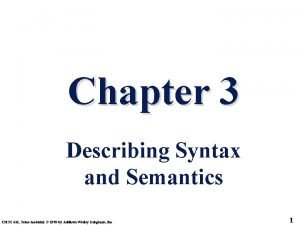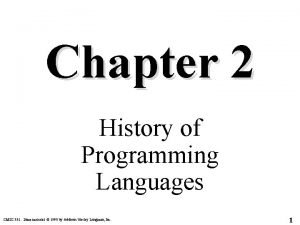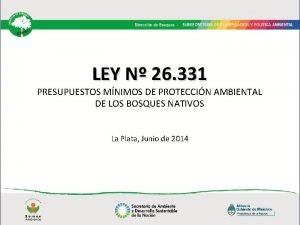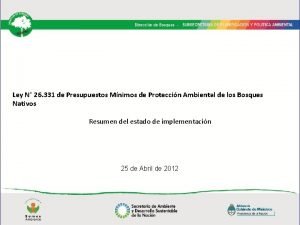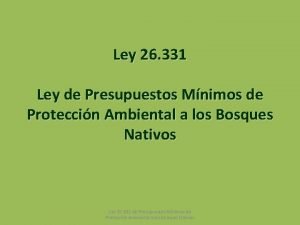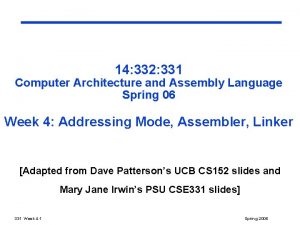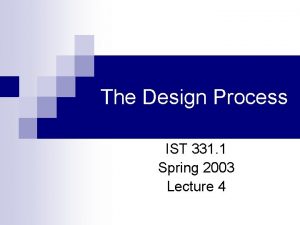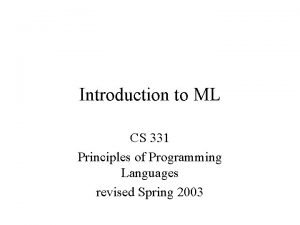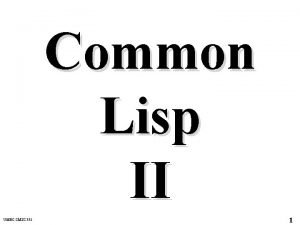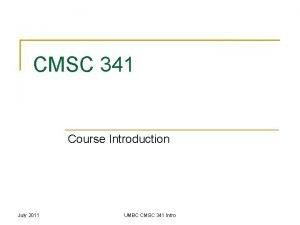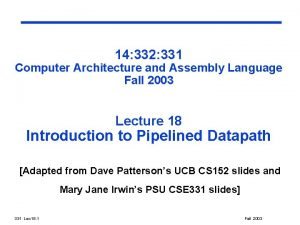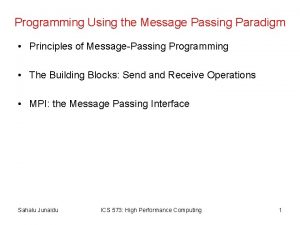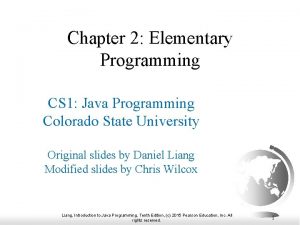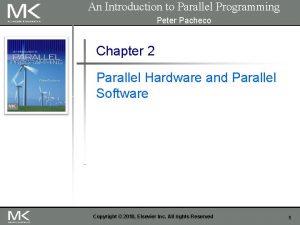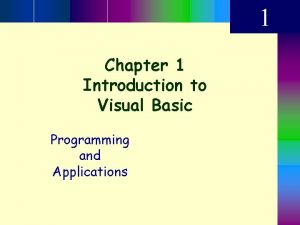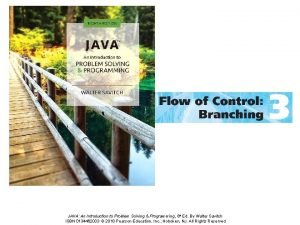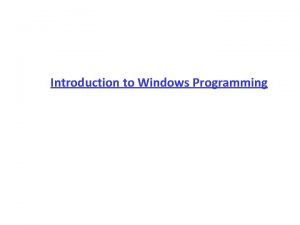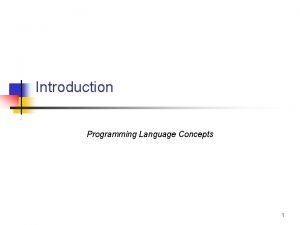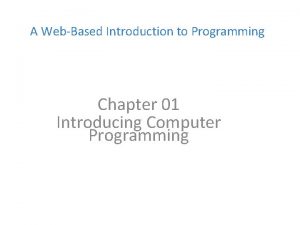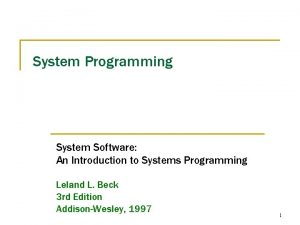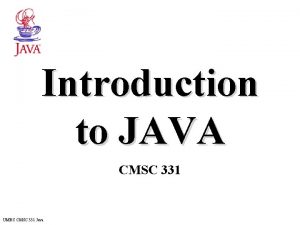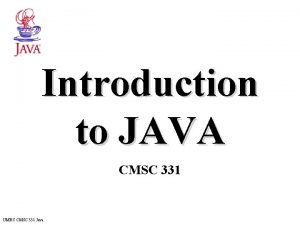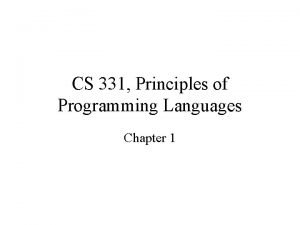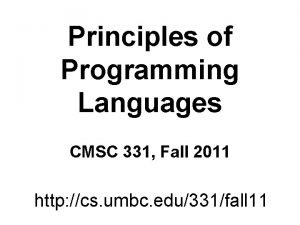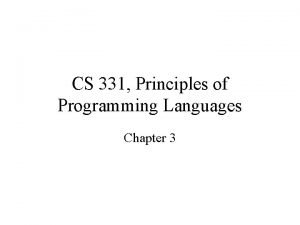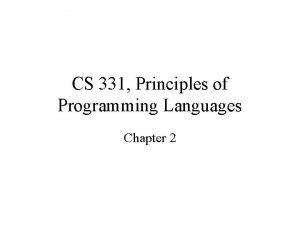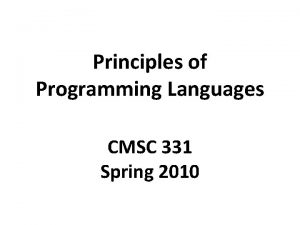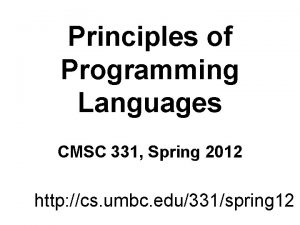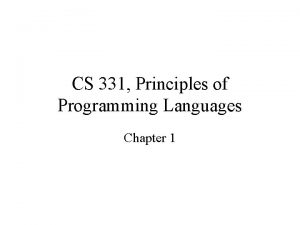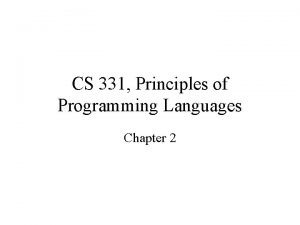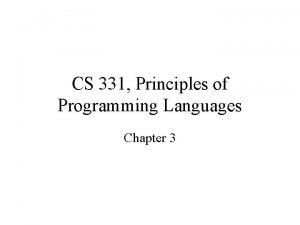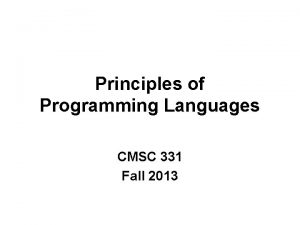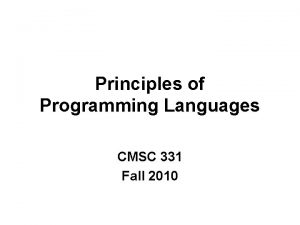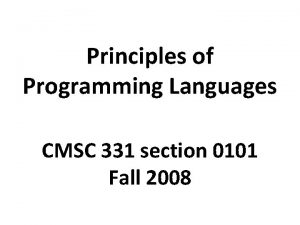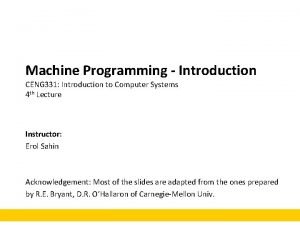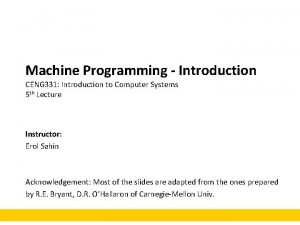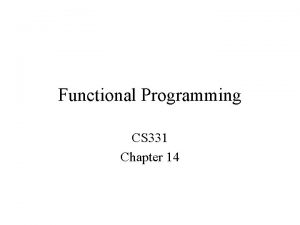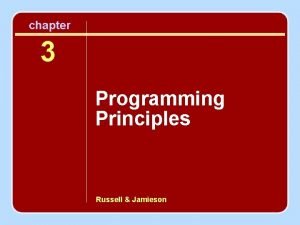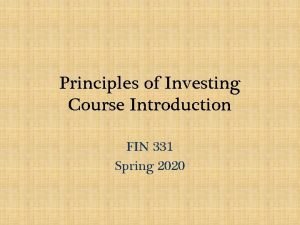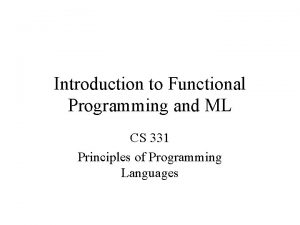Introduction to ML CS 331 Principles of Programming















![List Operations - val list 1 = [1, 2, 3]; val list 1 = List Operations - val list 1 = [1, 2, 3]; val list 1 =](https://slidetodoc.com/presentation_image_h/893cedba959517f905df409e7ed41650/image-16.jpg)
![More List Operations - val list 1 = [1, 2, 3]; val list 1 More List Operations - val list 1 = [1, 2, 3]; val list 1](https://slidetodoc.com/presentation_image_h/893cedba959517f905df409e7ed41650/image-17.jpg)























![Higher-Order Function map • The map function map(F, [a 1, a 2, …, an]) Higher-Order Function map • The map function map(F, [a 1, a 2, …, an])](https://slidetodoc.com/presentation_image_h/893cedba959517f905df409e7ed41650/image-41.jpg)
![Higher-Order Function reduce • The reduce function reduce(F, [a 1, a 2, …, an]) Higher-Order Function reduce • The reduce function reduce(F, [a 1, a 2, …, an])](https://slidetodoc.com/presentation_image_h/893cedba959517f905df409e7ed41650/image-42.jpg)














- Slides: 56

Introduction to ML CS 331 Principles of Programming Languages revised Spring 2003

Features of ML • A pure functional language – serious programs can be written without using variables • Widely accepted – reasonable performance (claimed) – can be compiled – syntax not as arcane (or as simple) as LISP

In these slides, • We use Standard ML of New Jersey • Runs on PCs, Linux, and other flavors of UNIX • Much of this material is based on Ullman’s book, Elements of ML Programming • See the SML documentation at http: //www. smlnj. org

Running SML on linix. gl • The SML processor is available at /afs/umbc. edu/users/n/i/nicholas/pub/331/smlnj. linux/bin or equivalently ~nicholas/. . /pub/331/smlnj. linux/bin • Add this directory to your path, and do a rehash • Then invoke sml from a shell prompt with the command sml • Use control d to exit interpreter

Hello, world in SML Standard ML of New Jersey, - print("Hello worldn"); Hello world val it = () : unit -

Arithmetic in ML • Copy and paste the following text into a Standard ML window 2+2; 3*4; 4/3; 6 div 2; 7 div 3; (* note semicolon at end*) (* an error! *) (* integer division *)

Declaring Constants • Constants are not exactly the same as variables – they can be redefined, but existing uses of that constant (e. g. in function definitions) aren’t affected by such redefinition val freezing. Fahr = 32;

Ints and Reals • Note ~ is unary minus • min and max take just two input arguments, but that can be fixed! • The real operator converts to real • Parens can sometimes be omitted, but I don’t recommend it Int. abs ~3; Int. sign ~3; Int. max (4, 7); Int. min (~2, 2); real(freezing. Fahr); Math. sqrt real(2); Math. sqrt(real(2)); Math. sqrt(real 3);

- Int. abs ~3; val it = 3 : int - Int. sign ~3; val it = ~1 : int - Int. max (4, 7); val it = 7 : int - Int. min (~2, 2); val it = ~2 : int - Math. sqrt real(2); std. In: 57. 1 -57. 18 Error: operator and operand don't agree [tycon mismatch] operator domain: real operand: int -> real in expression: Math. sqrt real - Math. sqrt(real(2)); val it = 1. 41421356237 : real - Math. sqrt(real 3); val it = 1. 73205080757 : real

Strings • Delimited by double quotes • the caret mark ^ is used for string concatenation, e. g. “house”^”cat” • n is used for newline, as in C and C++

Comparison Operators • The usual <, >, <=, >= and <> are available • For reals, = and <> are not available – For reals a and b, a <= b andalso a>= b is an equality test • The connectors “andalso” and “orelse” are logical operators with short-circuit evaluation

If Then Else • If Then Else is an expression, not a control structure • Example, if quotient, dividend and divisor are reals, we might have val quotient = if divisor > 0 then dividend/divisor else 0

Tuples • Tuples are data items drawn from a Cartesian product type. Example: type fraction = int * int; val foo: fraction = (44, 100); #1(foo); (* returns 44 *) #2(foo); (* returns 100 *) • Tuples are of fixed size, e. g. 2 in this example

Lists in ML • Objects in a list must be of the same type – [1, 2, 3]; – [“dog”, “cat”, “moose”]; • The empty list is written [] or nil

Making Lists • The @ operator is used to concatenate two lists of the same type • The : : operator makes a new list in which its first operand is the new first element of a list which is otherwise like the second operand. • The functions hd and tl give the first element of the list, and the rest of the list, respectively
![List Operations val list 1 1 2 3 val list 1 List Operations - val list 1 = [1, 2, 3]; val list 1 =](https://slidetodoc.com/presentation_image_h/893cedba959517f905df409e7ed41650/image-16.jpg)
List Operations - val list 1 = [1, 2, 3]; val list 1 = [1, 2, 3] : int list - val list 2 = [3, 4, 5]; val list 2 = [3, 4, 5] : int list - list 1@list 2; val it = [1, 2, 3, 3, 4, 5] : int list - hd list 1; val it = 1 : int - tl list 2; val it = [4, 5] : int list
![More List Operations val list 1 1 2 3 val list 1 More List Operations - val list 1 = [1, 2, 3]; val list 1](https://slidetodoc.com/presentation_image_h/893cedba959517f905df409e7ed41650/image-17.jpg)
More List Operations - val list 1 = [1, 2, 3]; val list 1 = [1, 2, 3] : int list - val list 2 = [3, 4, 5]; val list 2 = [3, 4, 5] : int list - 4: : list 1; val it = [4, 1, 2, 3] : int list - val list 3 = list 1: : list 2; an error! - val list 3=list 1@list 2; val list 3 = [1, 2, 3, 3, 4, 5] : int list - length(list 3); val length(list 3) = 6

Strings and Lists • The explode function converts a string into a list of characters • The implode function converts a list of characters into a string • Examples: - explode("foo"); val it = [#"f", #"o"] : char list - implode [#"c", #"a", #"t"]; val it = "cat" : string -

Heads and Tails • The cons operator : : takes an element and prepends it to a list of that same type. • For example, the expression 1: : [2, 3] results in the list [1, 2, 3] • What’s the value of [1, 2]: : [ [3, 4], [5, 6]] ? • What’s the value of x: : [], for any atom x?

Declaring Functions • A function takes an input value and returns an output value • ML will figure out the types

Notes • ML is picky about not mixing types, such as int and real, in expressions • The value of “it” is always the last value computed • Function arguments don’t always need parentheses, but it doesn’t hurt to use them

Types of arguments and results • ML figures out the input and/or output types for simple expressions, constant declarations, and function declarations • If the default isn’t what you want, you can specify the input and output types, e. g. fun div. By 2 x: int = x div 2 : int; fun divide. By 2 (y : real) = y / 2. 0; div. By 2 (5); divide. By 2 (5. 0);

Two similar divide functions - fun div. By 2 x: int = x div 2 : int; val div. By 2 = fn : int -> int - fun divide. By 2 (y : real) = y / 2. 0; val divide. By 2 = fn : real -> real - div. By 2 (5); val it = 2 : int - divide. By 2 (5. 0); val it = 2. 5 : real -

Functions and Patterns • Recall that min and max take just two arguments • However, using the fact that, for example, – min(a, b, c) = min(a, min(b, c))

Generalizing Min • An example of ML pattern matching – the cons notation x: : xs is both a binary constructor and a pattern – cases aren’t supposed to overlap • Note that lists of any size are supported – but the elements are expected to be integers – checking that the rest of the list is non-empty is critical - but why?

(* Sample ML program - Min. List *) (* Takes a list of integers as input, and returns a list with at most one element, i. e. the smallest element in the list *) fun Min. List([]) = [] | Min. List(x: : xs) = if null(xs) then [x] else [Int. min(x, hd(Min. List(xs)))]; Min. List([]); Min. List([1, 2]); Min. List([315, 41, 59, 265, 35, 897]);

When we run Min. List, … - use "Min. List. sml"; [opening Min. List. sml] val Min. List = fn : int list -> int list val it = [] : int list val it = [1] : int list val it = [35] : int list val it = () : unit

Building trees • It’s easy to build recursive data types in ML • Some examples follow

(* Sample ML program - Abstract Syntax Trees *) (* Declare the ast datatype *) datatype ast = empty | leaf of int | node of string*ast; fun traverse(empty) = print "empty tree" | traverse(leaf(n)) = (print (Int. to. String(n)); print " ") | traverse(node(operator, left, right)) = ( traverse(left); print operator; traverse(right)); fun prefix(tree: ast) = (traverse(tree); print "n"); prefix(empty); prefix(leaf(4)); prefix(node("*", node("+", leaf(5), leaf(3)), node("-", leaf(10), leaf(4))));

Two ways to count (* count from i to j *) fun count. Up(i: int, j: int) = if i=j then print(" "^Int. to. String(j)) else (count. Up(i, j-1); print(" "^Int. to. String(j))); (* count from i to j *) fun Tcount. Up(i: int, j: int) = if i=j then print(" "^Int. to. String(j)^"n") else (print(" "^Int. to. String(i)); Tcount. Up(i+1, j));

What about control structures? • Well, there aren’t any in the usual (procedural) sense • If then else, case, and iteration are all accomplished by evaluation of expressions

Iteration vs. Recursion (* note that F is a functional parameter *) fun loop. It(i: int, n: int, F) = if i = n then F(i) else let val dummy = F(i) val dummy 2 = loop. It(i+1, n, F) in dummy 2 (* any expression could be used *) end;

The Print Function • print(“This stringn”); • print(“ 2+2 is “^Int. to. String(2+2)^”n”); • Expressions may be grouped with parentheses, e. g (print(“a”); print(“b”)) • But the grouped expressions may not change the environment, so this is not the same as a block in a procedural language

More About I/O • To access functions in the Text. IO structure, open Text. IO; • To open a file open. In(“somefile”); • The value returned is of type instream • end. Of. Stream(file: instream): bool • input. N(file: instream, n: int): string • input(file: stream): string (* whole file *)

Matches and Functions • Example of match expression: val rec reverse = fn nil => nil| x: : xs => reverse(xs) @ [x]; • The rec keyword stands for “recursive”, which is necessary because the binding of reverse as a function name is not yet established

Anonymous Functions • Functions don’t have to have names, e. g. (fn x => x+1) (3) yields 4 • Such functions can be passed as parameters, e. g. for use in the map or reduce functions, to be discussed later in this chapter.

If Then Else = Case • The familiar if E 1 then E 2 else E 3 is equivalent to case E 1 of true => E 2 | false => E 3 • Example: if x<y then #”a” else #“b” is the same as case x<y of true => #”a” | false => #“b” (* note same types *)

Exceptions • • exception Foo and Bar; raise Foo; exception Foo of string; The handle clause matches exceptions with (hopefully) suitable actions • Exceptions can be defined in let clauses

Polymorphic Functions • If you don’t know the type in advance, or if it doesn’t matter, ‘a list matches a list of any type • Example: fun list. Len(x: ‘a list) = if x = nil then 0 else 1+list. Len(tl(x));

Higher Order Functions • Functions may be passed as parameters, e. g. fun trap(a, b, n, F)= if n <= 0 orelse b-a <= 0. 0 then 0. 0 else let val delta = (b-a)/real(n) in delta*(F(a)+F(a+delta))/2. 0+ trap(a+delta, b, n-1, F) end;
![HigherOrder Function map The map function mapF a 1 a 2 an Higher-Order Function map • The map function map(F, [a 1, a 2, …, an])](https://slidetodoc.com/presentation_image_h/893cedba959517f905df409e7ed41650/image-41.jpg)
Higher-Order Function map • The map function map(F, [a 1, a 2, …, an]) produces the list [F(a 1), F(a 2), …, F(an)] • The function may be defined (per Harper’s new ML book) fun map f nil = nil | map f (h: : t) = (f h): : (map f t)
![HigherOrder Function reduce The reduce function reduceF a 1 a 2 an Higher-Order Function reduce • The reduce function reduce(F, [a 1, a 2, …, an])](https://slidetodoc.com/presentation_image_h/893cedba959517f905df409e7ed41650/image-42.jpg)
Higher-Order Function reduce • The reduce function reduce(F, [a 1, a 2, …, an]) produces F(a 1, F(a 2, F(…, F(an-1, an)…))) • The reduce function may be implemented as follows (from Ullman) exception Empty. List; fun reduce (F, nil) = raise Empty. List | reduce (F, [a]) = a | reduce (F, x: : xs) = F(x, reduce(F, xs));

More on reduce • Harper gives a more general form of reduce fun reduce (unit, opn, nil) = unit | reduce (unit, opn, h: : t) = opn(h, reduce (unit, opn, t)) • Example: two ways to sum a list of numbers fun add_up nil = 0 | add_up(h: : t) = h + add_up t or fun add_up alist = reduce (0, op +, alist) • The op keyword allows + to be a parameter

More on reduce • To avoid passing unit and opn as parameters that don’t change, again from Harper’s book, fun better_reduce (unit, opn, alist) = = unit | red (h: : t) = opn(h, red t)) in red alist end let fun red nil • We have less overhead by passing only those parameters that change

More on reduce • “Staging” helps even more! Again from Harper fun staged_reduce (unit, opn) = = unit | red (h: : t) = opn(h, red t)) in red end let fun red nil • We can use staged_reduce on many lists, e. g. reduce(unit, opn, alist) is the same as (but slower than) staged_reduce(unit, opn) alist

Higher-Order Function filter • The filter function takes a predicate P and a list [a 1, a 2, …, an] and returns the sublist such that P is true for every element of the sublist • To implement filter fun filter(P, nil) = nil | filter(P, x: : xs) = if P x then x: : filter(P, xs) else filter(P, xs)

The ML Type System • Basic types include int, real, string, char, bool, and others • Tuple types, e. g. int*real*char • Function types, e. g. int->bool • Type constructors list and option – int list – char option

Creating Names for Types • type orderpair = int*int • type finite. Sequence = real list; • and these can be parameterized

Datatypes • Enumerated types, e. g. datatype berry. Type = raspberry | blueberry | blackberry; • So then we can say, for example, val b: berry. Type = raspberry;

Recursive Datatypes • Example: binary trees, where the values may be of some type ‘label: datatype ‘label btree = Empty | Node of ‘label * ‘label btree • val in. Binary: int btree = Node(5, Node(1, Empty), Empty)

ASTs Revisited (* Sample ML program - Abstract Syntax Trees *) (* Assume that terminal. Type and nonterminal. Type already known *) (* Declare the ast datatype *) datatype ast = empty | leaf of terminal. Type | node of nonterminal. Type*(ast list); fun traverse(empty) = print "empty tree" | traverse(leaf(t)) = (print. Terminal t; print " ") | traverse(node(nt, []) = print. Nonterminal(nt) | traverse(node(nt, x: : xs)) = (print. Nonterminal(nt); traverse(x); traverse. List(xs)) and fun traverse. List([]) = print “ “ | traverse. List(x: : xs) = (traverse(x); traverse. List(xs));

Record Structures • Records are wrapped in curly braces, and fields are separated by commas • Field names may be used to refer to specific elements of the record

Record Example - type address. Type = {street: string, city: string, zip: int}; type address. Type = {city: string, street: string, zip: int} (note that SML sorted the fields alphabetically) - val umbc: address. Type = {street="1000 Hilltop Circle", city="Baltimore", zip=21250}; val umbc = {city="Baltimore", street="1000 Hilltop Circle", zip=21250} : address. Type - #city(umbc); val it = "Baltimore" : string

Pattern Matching in Records • Pattern matching works, as in x as {street=xstr, city=xcity, zip=xzip}: : xs • If we don’t care about all the fields, use an ellipsis, e. g. x as {street=xstr, …}: : xs • Or even x as {city, …}

Arrays • open Array; val zero. Vector = array(100, 0); • sub(zero. Vector, 0) is zero, as is sub(zero. Vector, 99) • update(zero. Vector, 2, 3. 14) changes the third element of the (now misnamed) zero. Vector

Case Studies • Hash tables – Make an array of hash buckets, each bucket containing a simple list of values • Triangularization of a matrix – If the array has m rows and n columns, make an array of m elements, each element being an array of n elements.
 Ce 331
Ce 331 Ssis 331
Ssis 331 Uw cse 331
Uw cse 331 14:332:331
14:332:331 14:332:331
14:332:331 Fin 331 exam 1
Fin 331 exam 1 Cse 331
Cse 331 14:332:331
14:332:331 Ist 331
Ist 331 Cmsc 331 umbc
Cmsc 331 umbc Cmsc 331
Cmsc 331 Ce 331
Ce 331 Ist 331
Ist 331 Cmsc 331
Cmsc 331 Cmsc 331
Cmsc 331 Ceng331
Ceng331 Cmsc 331
Cmsc 331 Cmsc 331
Cmsc 331 In 331 bce, alexander the great successfully invaded egypt.
In 331 bce, alexander the great successfully invaded egypt. Ley 26 331
Ley 26 331 Ley 26 331
Ley 26 331 Ley 26 331
Ley 26 331 Komax gamma 333 pc
Komax gamma 333 pc Pred-331
Pred-331 14:332:331
14:332:331 Ist 331
Ist 331 2011 plc (cs) 331
2011 plc (cs) 331 Anth 331
Anth 331 Cis 331
Cis 331 Mist-331
Mist-331 Cmsc 331
Cmsc 331 Cmsc 341
Cmsc 341 14:332:331
14:332:331 Perbedaan linear programming dan integer programming
Perbedaan linear programming dan integer programming Greedy vs dynamic
Greedy vs dynamic System programming
System programming Linear vs integer programming
Linear vs integer programming Programing adalah
Programing adalah Principles of message passing programming
Principles of message passing programming Adam doupe cse 340
Adam doupe cse 340 Vineeth kashyap
Vineeth kashyap Language
Language Expert systems: principles and programming, fourth edition
Expert systems: principles and programming, fourth edition Introduction to server side programming
Introduction to server side programming Problem solving
Problem solving Introduction to programming languages
Introduction to programming languages Daniel liang introduction to java programming
Daniel liang introduction to java programming An introduction to parallel programming peter pacheco
An introduction to parallel programming peter pacheco Introduction to visual basic
Introduction to visual basic What is plc stand for
What is plc stand for Java an introduction to problem solving and programming
Java an introduction to problem solving and programming Console programming
Console programming Programming language
Programming language Csc102
Csc102 A web based introduction to programming
A web based introduction to programming Sic/xe programming examples
Sic/xe programming examples Computer programming chapter 1
Computer programming chapter 1



